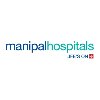Filter interviews by
Tata Main Hospital Interview Questions and Answers
Tata Main Hospital Interview Experiences
16 interviews found
All are documentary redy to process the interview
(2 Questions)
- Q1. One by redy to spech the interview
- Q2. After periodical question
Interview Preparation Tips
I applied via Walk-in and was interviewed in Mar 2024. There was 1 interview round.
(2 Questions)
- Q1. What is cpr,? How to given cpr,?
- Q2. What's bls? What is gcs?
I applied via Recruitment Consulltant and was interviewed in Jan 2023. There were 2 interview rounds.

(6 Questions)
- Q1. Where did you work before this? what kind of cases did you see?
- Q2. A patient came in emergency with sudden loss off consciousness with no history or attendant. what will further course of action?
- Q3. Management of hypoglycemia patient
- Q4. In what other patients you see sweating
- Q5. What are classical findings of hyperthyroidism? pulse and bp increase or decrease?
- Q6. How soon can you join?
Interview Preparation Tips
I applied via Naukri.com and was interviewed in Jul 2023. There was 1 interview round.
(1 Question)
- Q1. Basic question on medicine and emergency
I applied via Apna Jobs and was interviewed in Sep 2022. There were 2 interview rounds.

(4 Questions)
- Q1. Pipe ke Naam bataen plumber use hone wale
- Ans.
Plumbers use various types of pipes for different applications, including PVC, copper, and PEX, each serving unique purposes.
PVC (Polyvinyl Chloride) pipes: Commonly used for drainage and irrigation.
Copper pipes: Often used for water supply lines due to their durability.
PEX (Cross-linked Polyethylene) pipes: Flexible and used for both hot and cold water systems.
Galvanized steel pipes: Used in older homes for water supp...
- Q2. Nrv & Prv full form kya hai?
- Ans.
NRV stands for Non-Return Valve, and PRV stands for Pressure Relief Valve, both crucial in plumbing systems.
NRV prevents backflow in pipes, ensuring fluid flows in one direction.
Example of NRV: Used in water supply systems to avoid contamination.
PRV regulates pressure in a system, preventing damage from excessive pressure.
Example of PRV: Commonly found in hot water systems to prevent overheating.
- Q3. Girish Tab kahan use hoti hai
- Ans. Girish tab :- Singh Ke Niche wastpipe Singh ke joke what's Ok oil ya Charbi wait 5 Se Nikal Ke Girish type mein Pani Aur Tel ko alag karta hai Jaam se clear karne ke liye use Kiya jata hai Girish tab
- Q4. 1 meter kitne mm Hote Hain aur kitne senti meter hote hai
- Ans.
1 meter is equal to 1000 millimeters and 100 centimeters, making it a fundamental unit in the metric system.
1 meter = 1000 mm (millimeters)
1 meter = 100 cm (centimeters)
Example: A standard ruler is usually 30 cm long, which is 0.3 meters or 300 mm.
In construction, measurements are often converted between these units for precision.
Interview Preparation Tips
I applied via Referral and was interviewed before Apr 2023. There was 1 interview round.
(1 Question)
- Q1. Questions were related to recent advances in obstetrics practice
Interview Preparation Tips
Participate in national conferences
I applied via Company Website and was interviewed in Mar 2022. There were 2 interview rounds.
A po AB po O po OB po A nigetive AB nigetive O nigetive OB nigetive B positive B nigetive
A case study is a written account that gives detailed information about a person gurup a thing and their development over a period of time
Interview Preparation Tips
- Blood Bank
- Blood test
- Lab Testing
Sir yah mera Phone no h XXXXX XXXXX

(1 Question)
- Q1. How much money you want
Interview Preparation Tips
promotion limited
increment 3-5 percent annual
work culture - average
learning - average
problems- lots of non medical work, poor city life. poor work life balance
salary - good
I applied via Recruitment Consultant and was interviewed in May 2021. There were 4 interview rounds.
Interview Questionnaire
6 Questions
- Q1. What was the most important thing you learnt from your previous senior?
- Q2. MEdical Procedures you are abreast with
- Q3. Research papers ..if any
- Q4. Why do you want to shift here?
- Q5. Some practical patient management based questions
- Q6. You would like to know anything about institute
Interview Preparation Tips
I applied via Referral and was interviewed in Oct 2021. There was 1 interview round.
Interview Questionnaire
1 Question
- Q1. Tell me about yourself , and some technical questions
Interview Preparation Tips
Top trending discussions






Tata Main Hospital Interview FAQs
Some of the top questions asked at the Tata Main Hospital interview -
Tell us how to improve this page.
Tata Main Hospital Interviews By Designations
- Tata Main Hospital Resident Medical Officer Interview Questions
- Tata Main Hospital Medical Officer Interview Questions
- Tata Main Hospital Patient Relation Executive Interview Questions
- Tata Main Hospital Blood Bank Technician Interview Questions
- Tata Main Hospital Perfusionist Interview Questions
- Tata Main Hospital Specialist Interview Questions
- Tata Main Hospital M.SC.Nursing Student Interview Questions
- Tata Main Hospital Associate Specialist Interview Questions
- Show more
Interview Questions for Popular Designations
- Senior Executive Interview Questions
- Team Lead Interview Questions
- Software Engineer Interview Questions
- Senior Associate Interview Questions
- Senior Engineer Interview Questions
- Consultant Interview Questions
- Associate Software Engineer Interview Questions
- Graduate Engineer Trainee (Get) Interview Questions
- Show more
Overall Interview Experience Rating
based on 17 interview experiences
Difficulty level
Duration
Interview Questions from Similar Companies
Tata Main Hospital Reviews and Ratings
based on 160 reviews
Rating in categories
|
Staff Nurse
31
salaries
| ₹2.2 L/yr - ₹4.5 L/yr |
|
Associate Specialist
30
salaries
| ₹14 L/yr - ₹26.6 L/yr |
|
Junior Registrar
25
salaries
| ₹9.4 L/yr - ₹12.4 L/yr |
|
Medical Officer
14
salaries
| ₹10 L/yr - ₹13.5 L/yr |
|
Registrar
13
salaries
| ₹12 L/yr - ₹18.1 L/yr |

Apollo Hospitals

GeBBS Healthcare Solutions

UnitedHealth

Sahrudaya Healthcare (Medicover Hospitals)
- Home >
- Interviews >
- Tata Main Hospital Interview Questions














